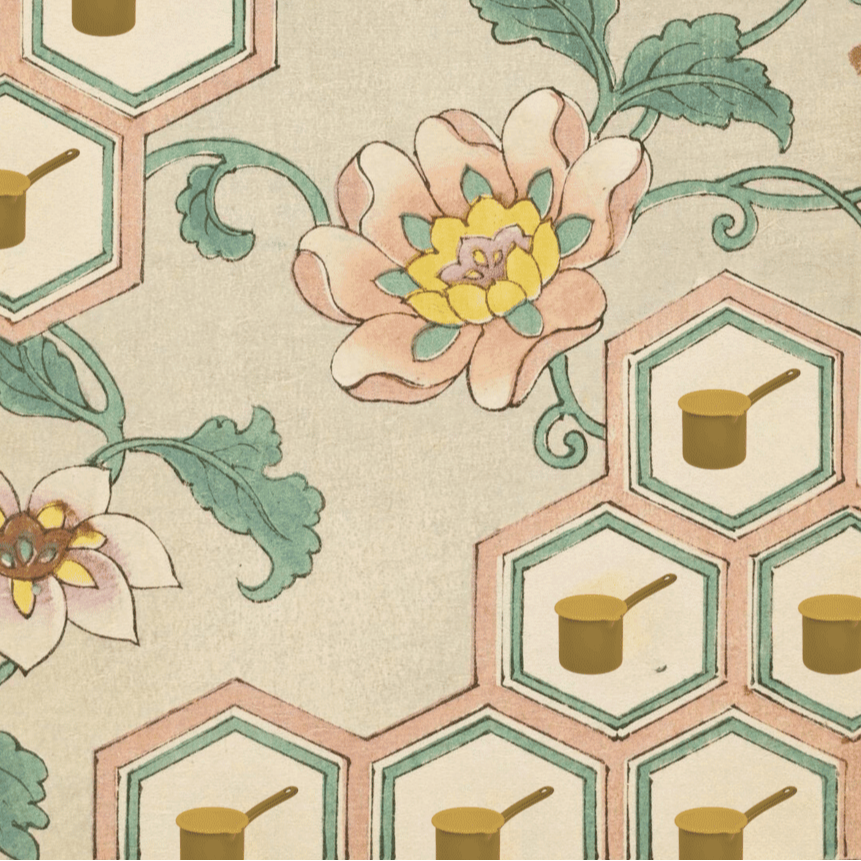- Magazine Dirt
- Posts
- Red curtains
Red curtains
It’s curtains all the way down.

Artwork by Greta Rainbow
Ben Firke on the Twin Peaks drapes that reveal the organizing principle of David Lynch’s work.
This is the fourth in a series of dispatches called Peak Objects, from Dirt x MUBI. Authors writing about a single object of their choice from the world of Twin Peaks. Prior dispatches were by Terry Nguyen, Geoff Rickly and Isle McElroy.
To understand Twin Peaks, you have to start with the curtains. They’re the most iconic draperies in television history. They’ve been parodied on The Simpsons and Scooby-Doo! and Joe Rogan’s red-curtained set has drawn comparisons to the Red Room.
Like much of David Lynch’s imagery, it would be easy to over-interpret the red curtains. Perhaps they simply look cool. Lynch liked drapes on a basic aesthetic level and used them over and over in his work (Mulholland Drive, Blue Velvet). With their texture and color they appear both soft and rigid—a painterly quality that doesn’t eat up too much of the set design budget. One could stop there if one wants.
But the curtains resonated with audiences because of their context within the show. They’re not just red curtains—they’re the backdrop to some of the most important scenes and dialogue. So beyond their basic aesthetic appeal, the curtains must say or mean something. Right?
Newsletter continues below

SPONSORED BY MUBI
To celebrate the 35th anniversary of Mark Frost and David Lynch’s groundbreaking TWIN PEAKS, the complete original series plus its 2017 follow-up THE RETURN are now available for the first time on MUBI. Dirt readers get two months free to enjoy this show, plus everything else streaming on the platform for incredible cinema. Start watching here.
Lying just five miles south of the Canadian border, and twelve miles west of the state line, is a sleepy little town filled with intriguing characters, a damn fine cup of coffee, and cherry pie so sweet it’ll kill you. While you’re visiting, you may ask yourself, “Who killed Laura Palmer? Is it all a dream? Or are the owls really not what they seem…” Welcome to the town of Twin Peaks.

Since DL’s films often contain dreamlike imagery and logic, a psychoanalytic approach may help us. There’s even an entire book of essays called Freud/Lynch: Behind the Curtain. Maybe it’s all a simple metaphor, signifying that “far beyond appearances lies a hidden reality.” (Page xxii.) This fits with the hidden desires, secrets, and truths that Lynch’s characters are inexorably drawn to figure out.
However, Jamie Ruers and Stefan Marianski, the editors of the book, warn us that Lynch shouldn’t be reduced to lazy Freudian tropes: “Although there is nothing behind it, the curtain engages each of us as spectators with the traces of our own peculiar nothing: a nothing which enables us to find and lose ourselves in Lynch’s films, just as we do in the analytic transference.”
Another possible interpretation is the “imageless image,” as posed in Anti-Oculus: A Philosophy of Escape by the podcasting collective Acid Horizon. The TL;DR definition of this term is “an image that’s not reducible to a simple metaphor.” It signifies nothing but itself. Instead of searching for meaning, we should look at what the image is doing, and consider it as more than a static object. (Page 182.) This is a better approach than simple metaphorical analysis, because it lets us examine these objects within the context of the story, and not as curtains in general.
So what do the curtains do? Simply put, they hide things, until Cooper or another character pulls them aside.
So what do the curtains do? Simply put, they hide things, until Cooper or another character pulls them aside. This action is simultaneously another action, an attempt to answer the question, “Hey, what’s behind this damn curtain?” In the second episode of Twin Peaks: The Return, Coop pulls them aside to reveal a room with more curtains. And then another one. What’s behind this damn curtain? It’s curtains all the way down…
This fruitless questioning—this method, as FBI Agent Rosenfield would say—encapsulates the experiences of both the characters and the audience. As they (and we) learn about the Laura Palmer case, the town residents, and the arcane secrets of the FBI, each new revelation fails to truly satisfy us, leading to even more wonder and curiosity and, yes, questions. The series even ends with Cooper asking a question (“What year is it?”) and receiving no answer. For every thread that’s resolved, two more become undone.
This fruitless questioning—this method, as FBI Agent Rosenfield would say—encapsulates the experiences of both the characters and the audience.
The curtains aren’t really props or set pieces. They are a process of discovery, of looking closer, searching for answers and finding none. And yet, like Agent Cooper, we keep on pulling them back, knowing there’s nothing but another sea of red behind them. They are a demonstration of Lynch’s world, both inside the story and out.
Here, we finally understand David Lynch’s entire game. Pull back a curtain; find a new one. That’s both human existence and Lynch in a nutshell. “It is happening again,” indeed. We will never find the answers we want, but must look anyway. Who cares about meaning? We can’t stop looking, and that’s the point.

OBJECTION
|
|
|
|
|





